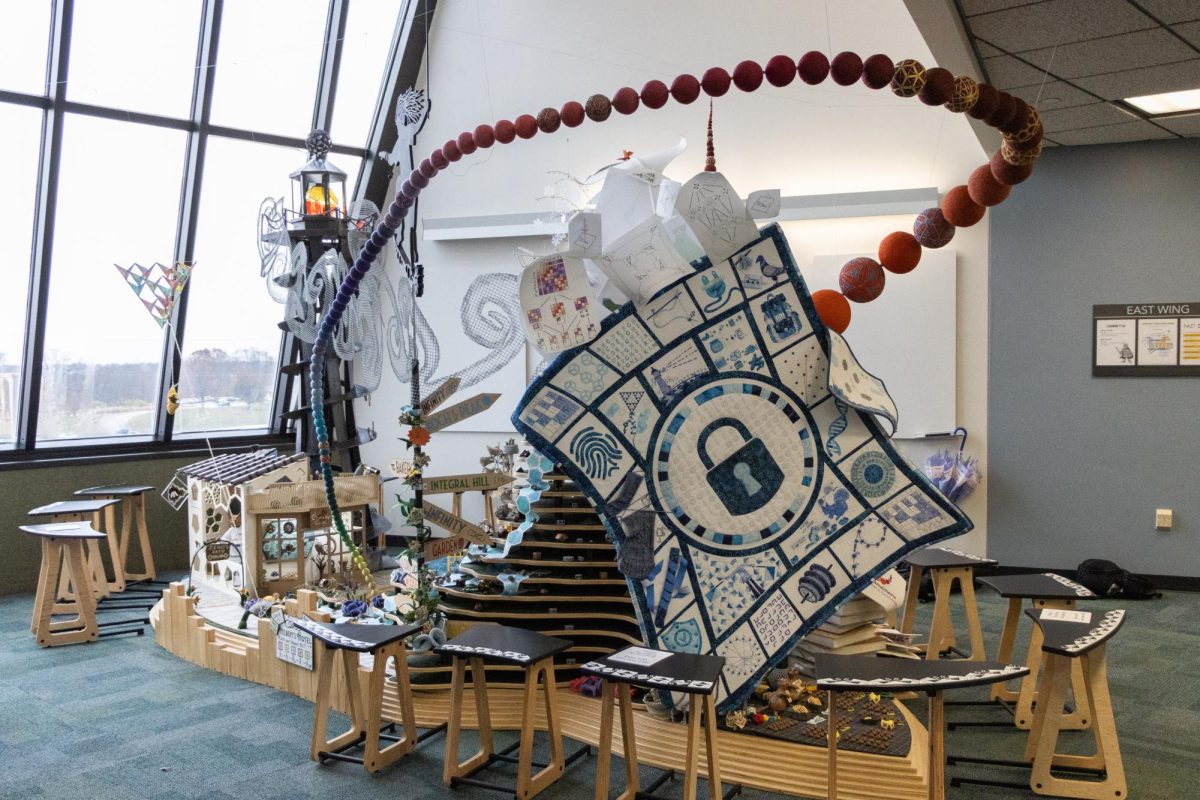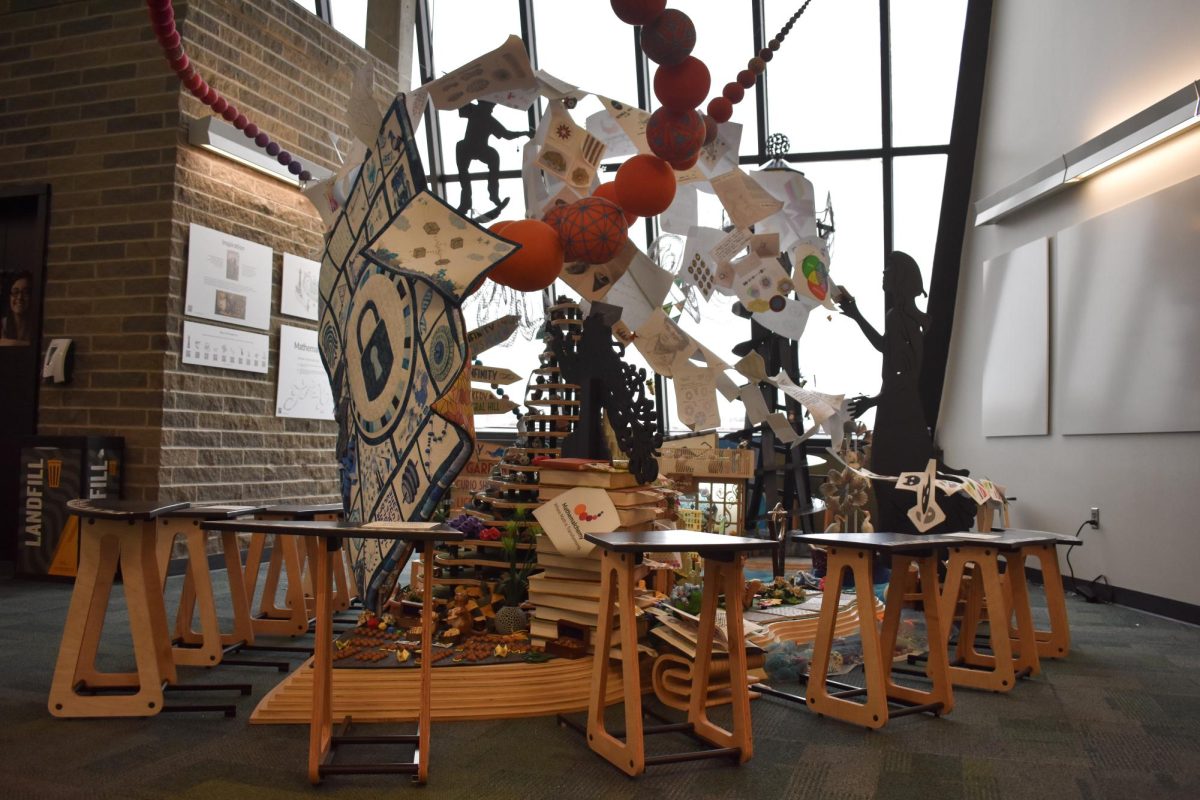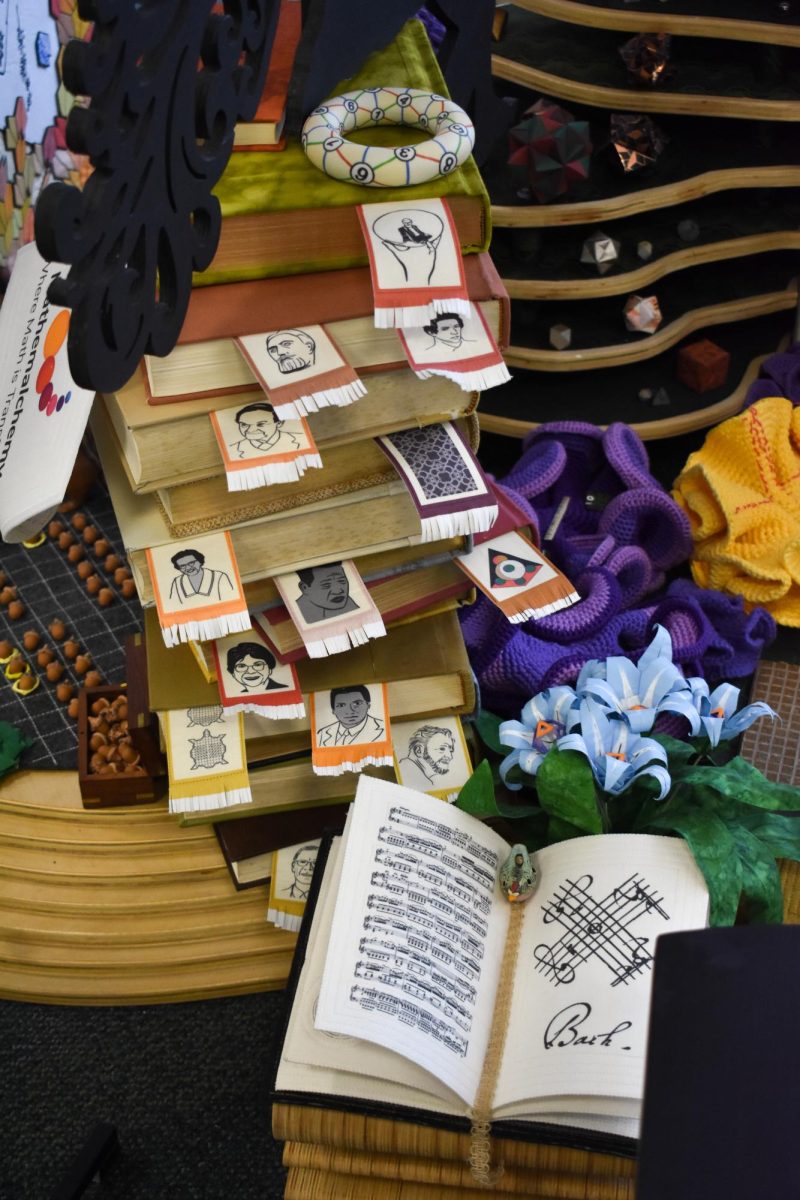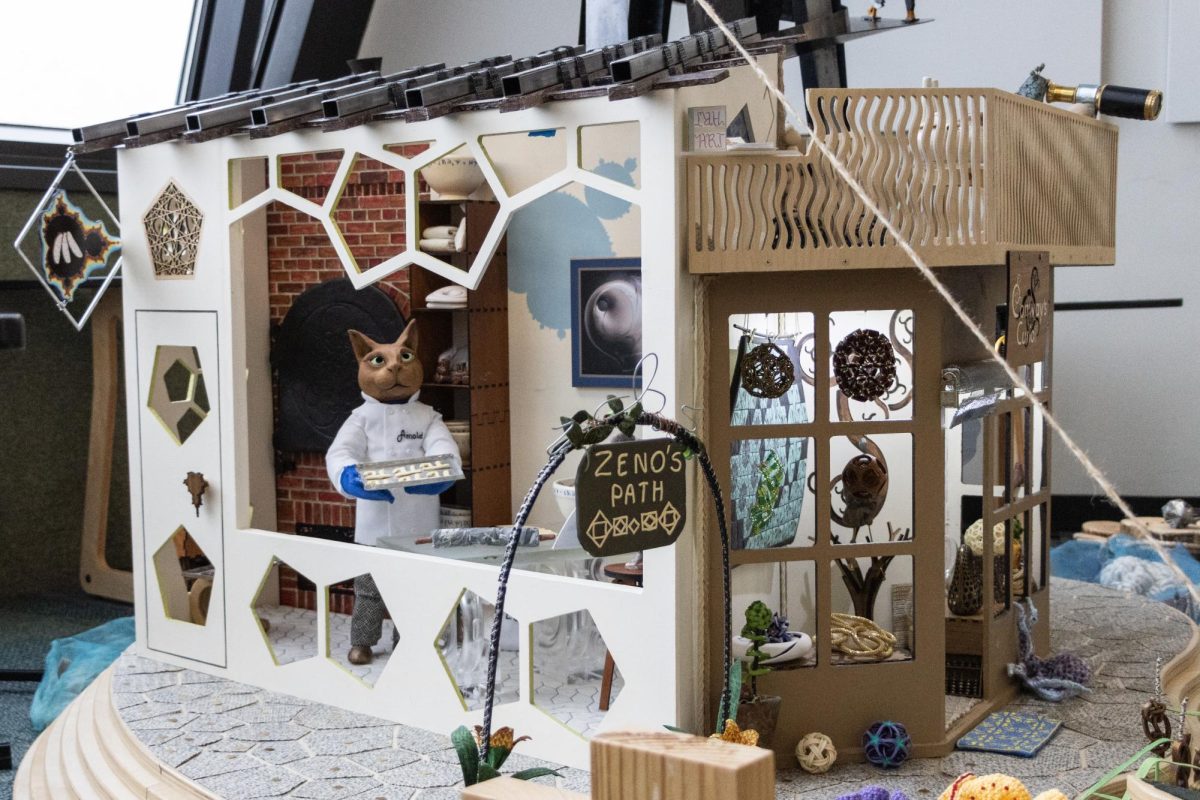The meticulous and whimsical world of Mathemalchemy has come to Northern Kentucky University.
The traveling installation mixes art and mathematics in a variety of media, including but not limited to: 3D print, ceramics, crochet, cross-stitching, metal, paper, painting, clay, quilt, stained glass, wood and lights. The installation will occupy the fourth floor of the Mathematics, Education and Psychology Center until February 2024.
A staggering level of detail and care infuses the project, with each component connected to one another physically and conceptually, and each contributing to the world’s larger lore. One of the most visible components, the Cryptography Quilt, depicts the Brassard-Bennett 84 protocol, known as the first quantum cryptography protocol, amidst a blue-white grid of other cryptography or encrypted messaging methods both biological and human-made: DNA, carrier pigeon letters, Morse code, fingerprint, semaphore, blockchain and more.
On its other side, the quilt celebrates seven female mathematicians from different time periods—Maryam Kirzakhani, Ada Lovelace, Gladys West, Caroline Series, Marjorie Rice, Sofya Kovalevskaya, Alicia Boole Stott—through a rendering of the doodles they made throughout their lifetimes.

From floor to ceiling, mathematical functions, properties, jokes and references are embedded into the very fabric, plus sundry other materials, of the Mathemalchemy world. But not simply a grand ode to math, the installation is a magical layered world occupied by diverse critters—ceramic chipmunks, a crocheted octopus, a porcelain cat and his stuffed mouse assistant. After all, it also aims to inspire curiosity and learning in young viewers.
The seeds of the project ruminated when world-renowned mathematician Ingrid Debauchies, best known for her work with wavelets and image compression technology, contacted textile artist Dominique Ehrmann. Long fascinated with mathematical art, Debauchies once came across Ehrmann’s “Time to Break Free” mixed media installation, which depicts a two-dimensional quilt entering a machine to transform into a three-dimensional one, and left impressed.
Debauchies envisioned a similar concept, one that transforms the abstraction of mathematical principles into immersive physicality. She knew that several mathematicians were capable of crafting high-quality artworks, so they designed and presented a conceptual mathematics garden at the 2020 Joint Mathematics Meetings in Denver, Colorado, with the hope of convincing other mathematicians.
Debauchies and Ehrmann expected eight to 12 people to join them—16 people signed up. The number then grew into a team of 24 mathematicians from different fields of expertise. Divided into smaller groups, they were tasked with creating their own scenes, storylines and characters for the installation’s many components. They planned to work independently on these elements, with a series of workshops scheduled from the third week of March 2020 until wrap-up in September.
Then, the COVID-19 pandemic struck. The project transitioned to Zoom, but that did not deter them from seeing the project through. Ehrmann mailed kits containing materials and equipment to team members for them to design and fabricate at home.
Though exceptionally bright, mathematicians might not know much about color coordination, said Ehrmann at the opening presentation for the project on Nov. 13. So she devised a color chart out of Home Depot paints, and again mailed the color strips to the fabricators so that their products could fit into a harmonious scheme.
Underneath the vibrant colors and delicate models, the installation stands upon structural support made of solid steel and chicken wires. In addition to fabricated components, the structure also utilizes existing objects to hold the elements in place, such as Debauchies’ ancient Encyclopedia Britannica.
The end result saw its first public showing at the National Academy of Sciences in Washington, D.C. It has since traveled across several states and even outside of the country, from the Juniata College Museum of Art in Pennsylvania to Boston University to the University of British Columbia’s Beaty Biodiversity Museum.
NKU associate professor in mathematics Andrew Long first learned about Mathemalchemy in Boston and was so impressed that he sought to make NKU one of its stops. Debauchies and Ehrmann presented an introductory lecture of the project to a full audience on Nov. 13 in the University Center’s Otto M. Budig Theater, while the installation had been delivered in parts over the prior weekend. According to Debauchies, the project ran into customs issues while crossing the border from Canada back into the U.S., so the installation did not fully assemble at NKU until Nov. 17.
Now complete, Mathemalchemy will remain in the Department of Mathematics and Statistics atrium for another two months. Afterwards, the installation will travel to the Museum of Mathematics in New York City, then Montreal. Plans are underway for a fundraising effort to bring the project to the Navajo Reservation in 2025, and even beyond North America to Europe.
Information about various aspects of the project, including the fabrication of and story behind each component, is available at mathemalchemy.org.




